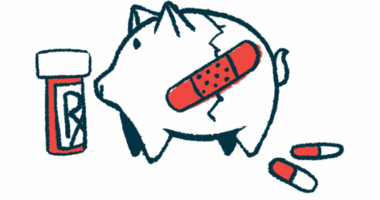Why Rare Disease Day Matters to the Amyloidosis Community

When I married my husband, Aubrey, I knew a hereditary and life-threatening disease affected some members of his family, but I had little other information about it. We naively carried on with our lives, secretly hoping the disease hadn’t reached his generation.
When we learned that several of Aubrey’s first cousins were ill, many family members began to despair. The experience of caring for ailing parents who had the disease was still raw and painful for many of them, including my husband, who was 14 when he lost his dad to the disease. My father-in-law had suddenly gone from being an active, fun-loving college teacher, to being riddled with pain, unable to move, and losing most of his bodily functions.
Aubrey’s cousins were eventually diagnosed with hereditary ATTR amyloidosis and received liver transplants, the go-to treatment back in 2000.
I can only imagine how Aubrey felt when he was diagnosed with the same condition in 2013.
Exploring the subtypes
First identified by German pathologist Rudolf Virchow about 150 years ago, much is still unknown about amyloidosis. Researchers have discovered that there are multiple subtypes ranging in severity, some of which may have yet to be discovered.
Amyloidosis type is determined by what causes the disease, and where and how the amyloid protein accumulates in the body. According to the Mayo Clinic, primary amyloidosis is the most common type in developed countries, and secondary amyloidosis is usually triggered by an existing inflammatory condition.
There is also the typically less severe localized amyloidosis, as well as wild-type amyloidosis, which primarily affects elderly males, and of course, Aubrey’s hereditary type. All types can cause issues, depending on which organs are affected and how far the disease has progressed.
My husband’s particular variant originated in Portugal, but is now found all over the world. It can cause cardiomyopathy and polyneuropathy, and may damage multiple organs, leading to disability and eventually, death.
Rare doesn’t mean unimportant
Because amyloidosis is rare and can present like many other illnesses, it’s often tricky to diagnose. By the time doctors diagnose it, accumulation of the amyloid protein has often done irreparable internal damage.
This was the case with my husband’s grandmother, father, aunties, and uncles. Even Aubrey’s brother passed away in his early 50s because it was too late to save him.
Feb. 28 is Rare Disease Day, a day when people across the world are called to learn about rare diseases and take some time to stand in a patient’s shoes. Just because a health condition is uncommon doesn’t mean that we should brush it off or pass the buck of advocating to someone else.
In some ways, rare is a misnomer, as more than 300 million people worldwide suffer from a rare disease. None of them should be sidelined when it comes to healthcare, treatment, and social support.
It wasn’t until Aubrey and I started the New Zealand Amyloidosis Patient Association that we began to see progress on the diagnosis and treatment fronts. It wasn’t until we felt equipped to advocate for ourselves and others that we began to educate our local nurses and doctors about the disease.
But this work takes a toll on us. We can’t reach the finish line if we’re running the race by ourselves. We need support and help. Rare Disease Day is an opportunity to show that you care. Learn more about how to get involved here.
Note: FAP News Today is strictly a news and information website about the disease. It does not provide medical advice, diagnosis, or treatment. This content is not intended to be a substitute for professional medical advice, diagnosis, or treatment. Always seek the advice of your physician or other qualified health provider with any questions you may have regarding a medical condition. Never disregard professional medical advice or delay in seeking it because of something you have read on this website. The opinions expressed in this column are not those of FAP News Today or its parent company, Bionews, and are intended to spark discussion about issues pertaining to familial amyloid polyneuropathy.








Leave a comment
Fill in the required fields to post. Your email address will not be published.